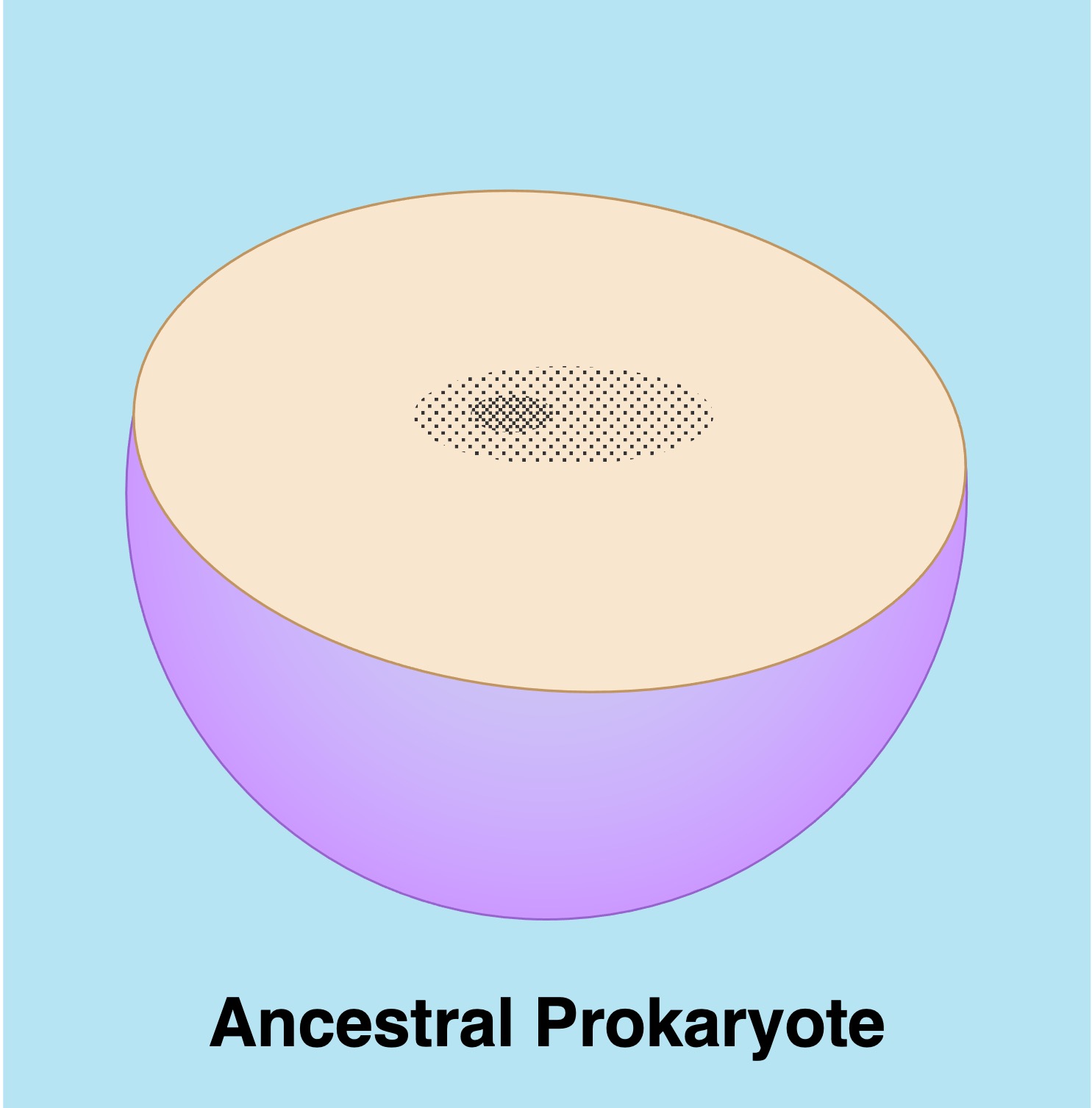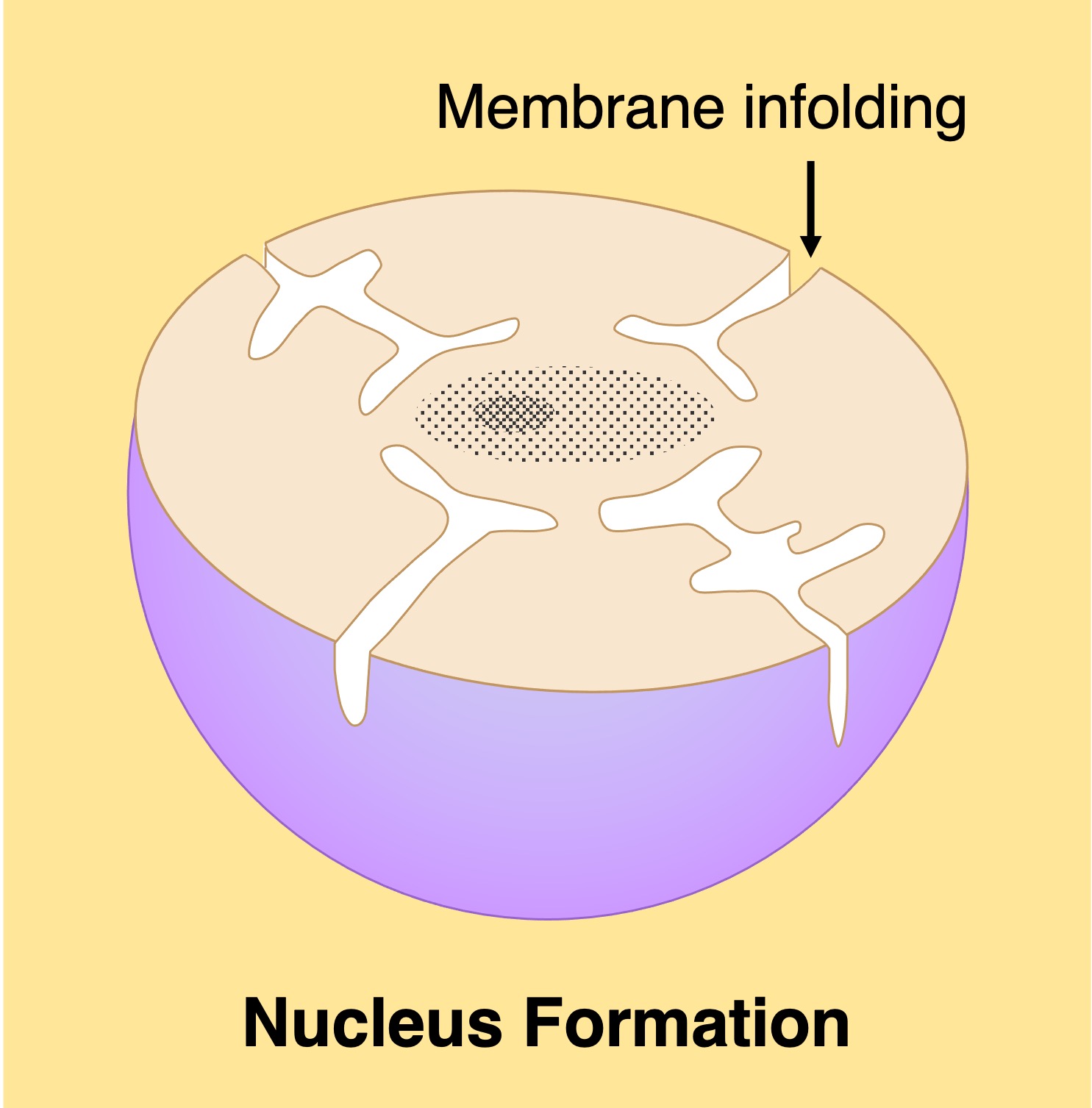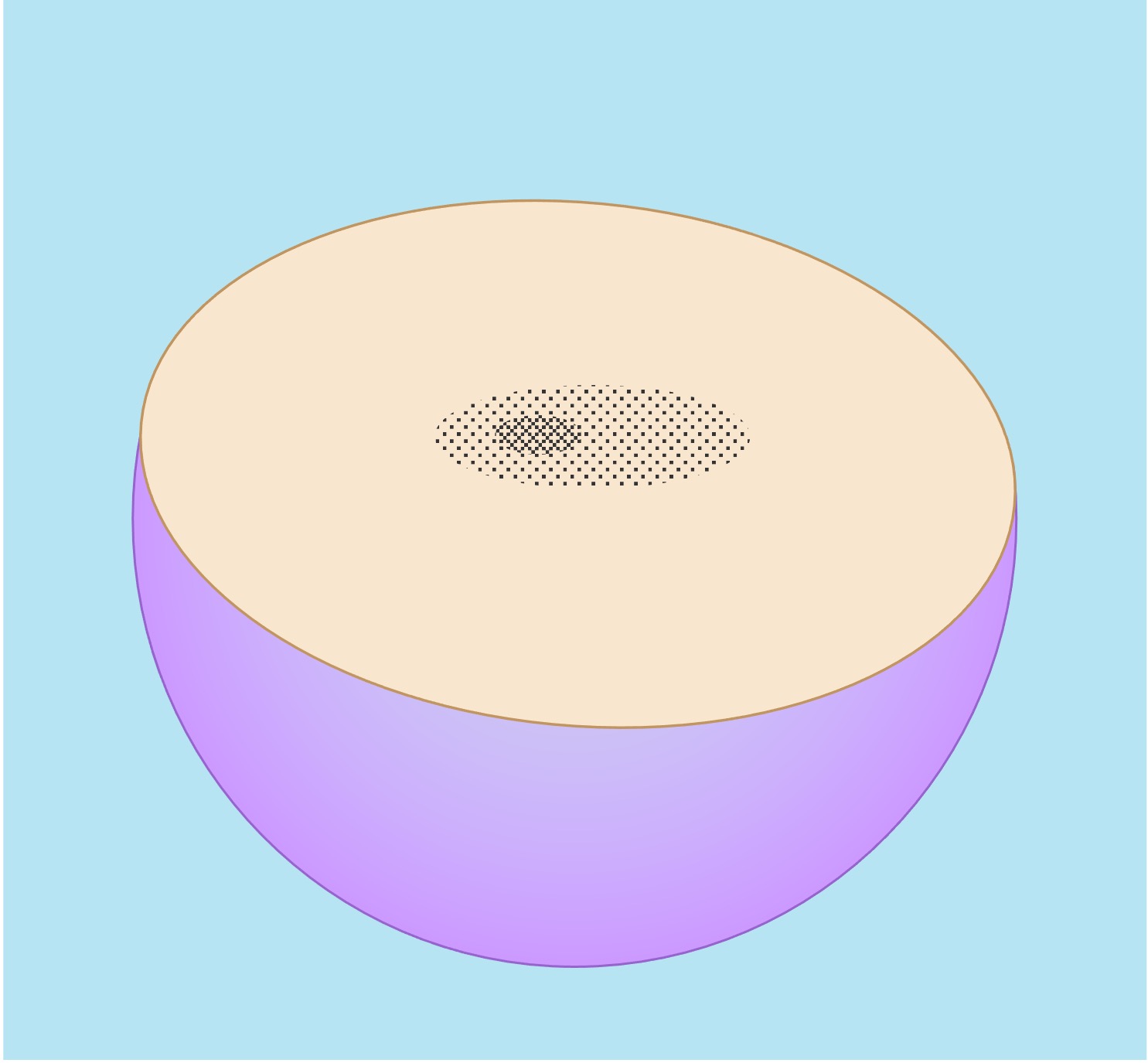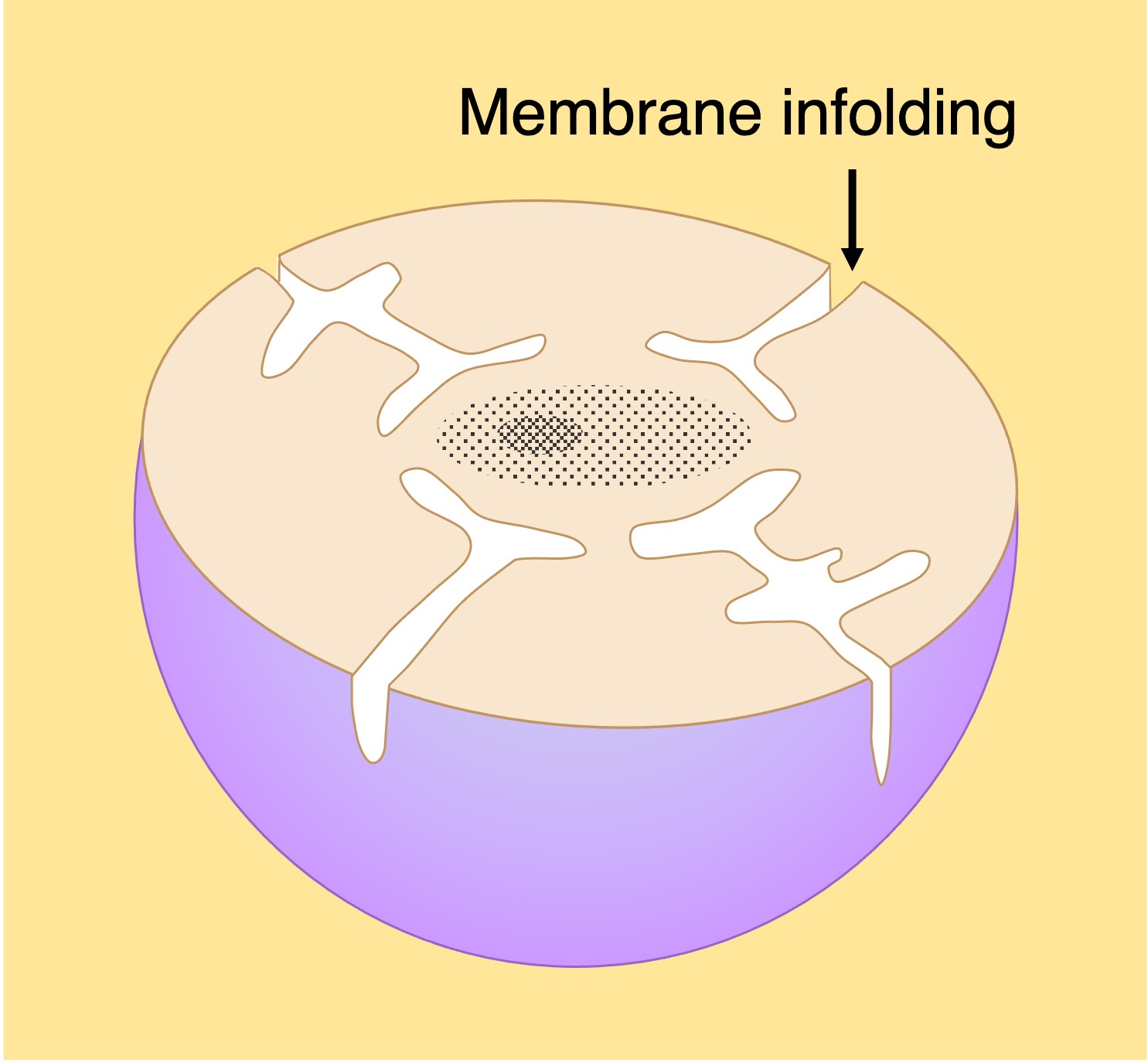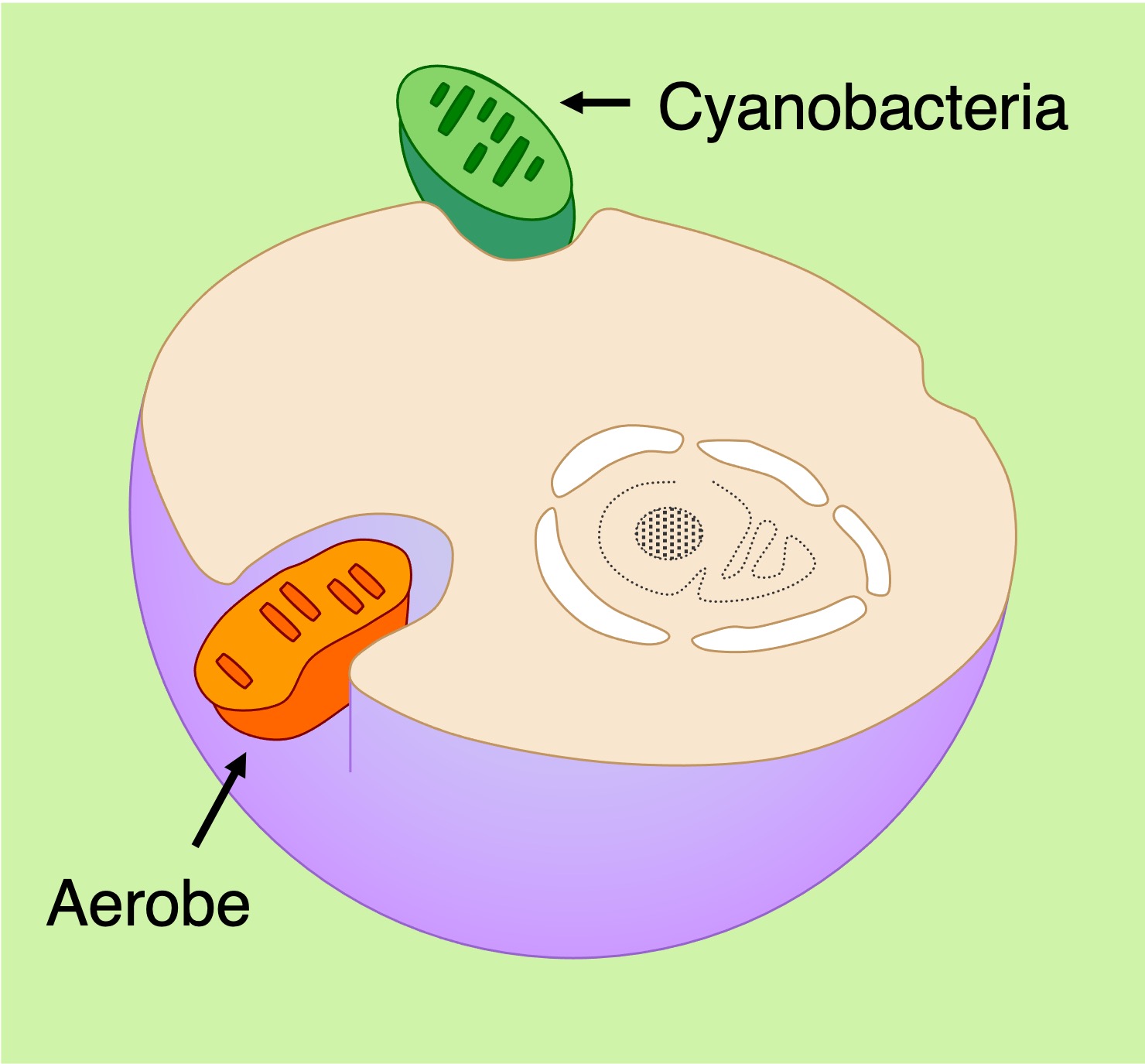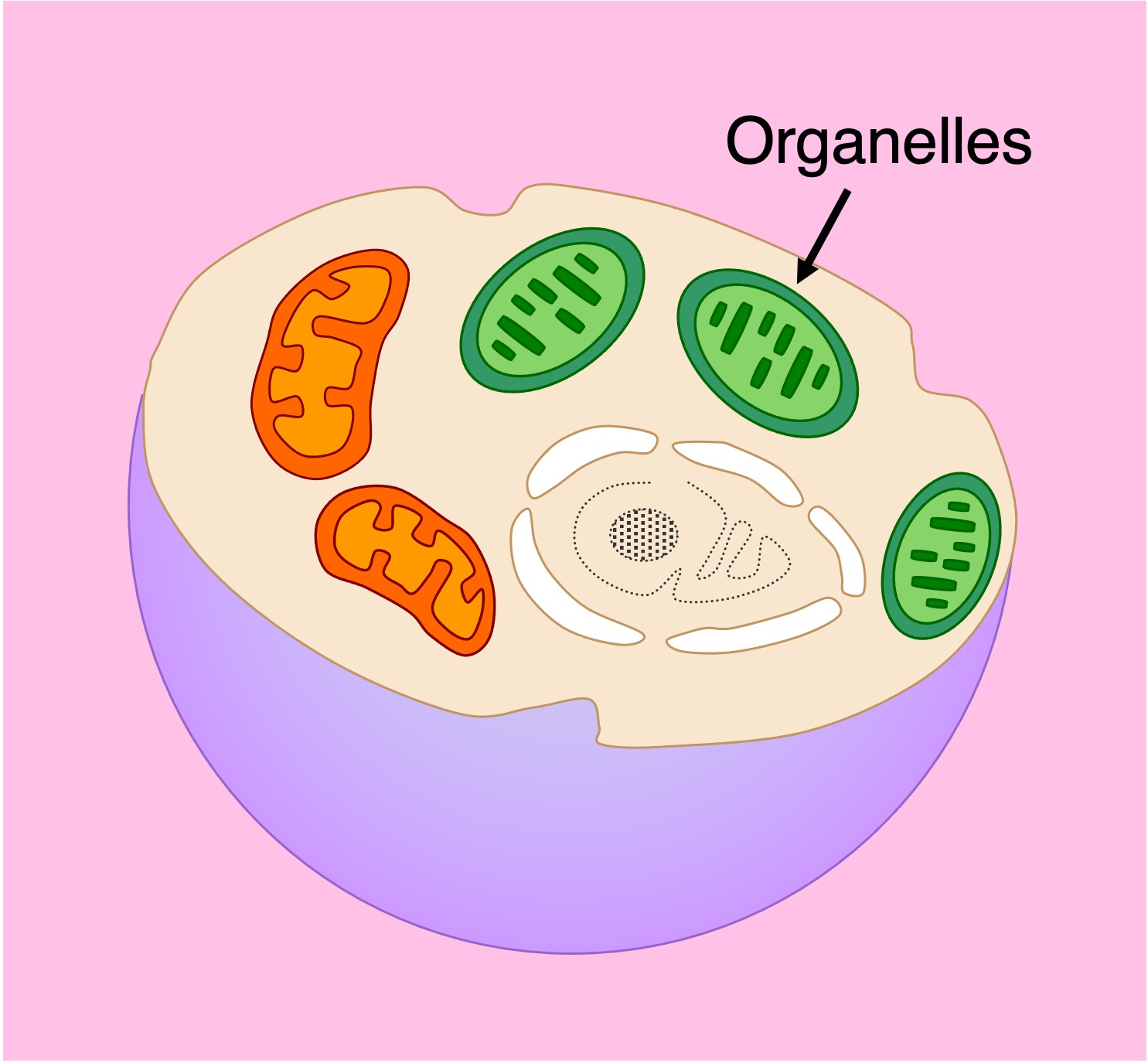

Endosymbiosis
Eukaryotic cells are believed to have evolved via endosymbiosis – whereby one cell was engulfed by another and became assimilated into its cellular structure
-
Current evidence suggests that all eukaryotes evolved from a common unicellular prokaryote that had a nucleus and reproduced sexually
-
This prokaryotic ancestor engulfed another aerobic bacterium, which over time lost its independent utility and developed into the mitochondria
-
A subsequent internalisation of a photosynthetic cyanobacterium likely contributed to the development of the chloroplast in plant cells
Endosymbiosis

1. Ancestral Prokaryote

2. Nucleus Formation

3. Endosymbiosis

4. Eukaryotic Cell
Evidence for Endosymbiosis
Mitochondria and chloroplasts are both organelles suggested to have arisen via endosymbiosis
-
These organelles are therefore expected to share characteristics with bacteria as a consequence of their prokaryotic origins
Evidence that supports the extracellular origins of these organelles include:
-
Membrane: They both have a double membrane (the outer membrane may have been vesicular in origin)
-
Antibiotics: Both organelles display susceptibility to certain antibiotics (antibiotics target prokaryotic features)
-
DNA: Mitochondria and chloroplast possess their own DNA, which is naked and circular (like in prokaryotes)
-
Division: Both organelles divide by a process similar to binary fission (the bacterial reproduction method)
-
Ribosomes: They both have 70S ribosomes, which are also found in prokaryotic cells

